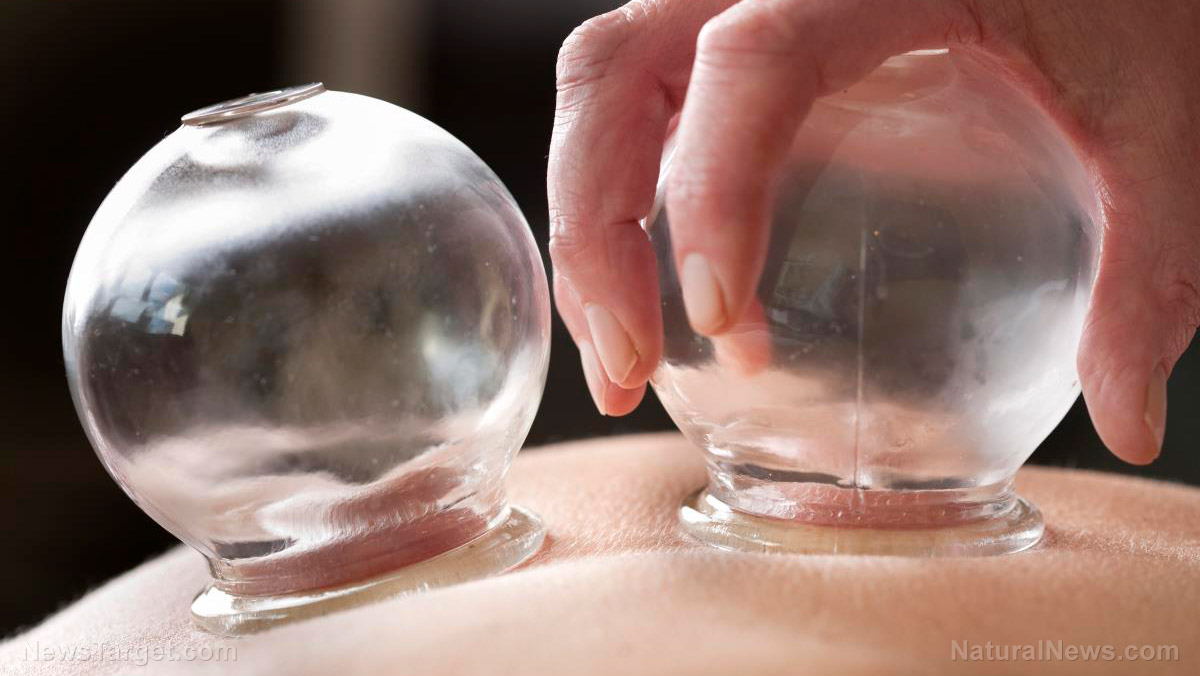The health benefits of cupping therapy: What you need to know
09/09/2019 / By Melissa Smith

Cupping therapy is a healing practice that involves placing cups at certain points on a person’s skin. A practitioner creates suction in the cups, which pulls against the skin. There are two main types of cupping: wet and dry. In wet cupping, a practitioner punctures the patient’s skin before starting the suction. This removes some of the patient’s blood during the procedure.
What conditions can cupping treat?
Cupping therapy is used in traditional Chinese and Middle Eastern medicine and has gained popularity in recent years. In traditional Chinese medicine, it is said to promote the flow of vital energy and help correct any imbalances due to illness or injury. Cupping therapy also has links to acupoints on a person’s body, which are central to acupuncture practice.
Cupping practitioners claim that it works by improving a person’s blood flow under the cups. This healing practice is also said to boost immunity by increasing lymphatic output; reduce inflammation; and calm the nervous system. It may also help stretch muscles and connective tissue, provide relaxation, and improve overall well-being.
Cupping therapy is often used as a complementary treatment for sports injuries and performance and different kinds of pain, such as back pain, knee pain, muscle pain, headache or migraine, and neck and shoulder pain. A report published in the Journal of Traditional and Complementary Medicine noted that cupping therapy is an effective alternative treatment for acne, cervical spondylosis, facial paralysis, herpes zoster, and pain. Cupping therapy has been linked to other health benefits, such as:

Pain relief
People often turn to cupping therapy to relieve pain. A study published in the journal Evidence-based Complementary and Alternative Medicine found some evidence that cupping may relieve pain. Another research, which was published in the journal Revista Latina-Americano De Enfermagem, said it may be effective in treating back pain. It may also be effective in relieving neck pain, according to a study published in BMJ Open.
However, all these studies suggested that more better-quality research is needed to determine whether cupping therapy is truly effective.
Skin remedy
Cupping therapy may be effective at treating herpes zoster and acne, according to a study published in the journal PLoS One.
Sports recovery
Cupping therapy has increasingly become popular among athletes as part of their recovery practices. Some studies showed that cupping improved perceptions of pain and disability and had positive effects on a range of motion compared to no cupping. However, a study published in the Journal of Alternative and Complementary Medicine found no consistent evidence to show that it was effective for anything related to sports recovery. (Related: Research shows that wet cupping therapy can improve musculoskeletal pain.)
Should you try it?
Cupping therapy is considered a safe treatment. However, it may cause lightheadedness or dizziness, sweating, or nausea during the treatment. Additionally, one of the biggest downsides of cupping therapy is that it typically leaves round bruises on a person’s skin. If you want to try cupping, it’s best to discuss it first with your healthcare provider.
Cupping therapy is also not for everyone. If you have broken, irritated, or inflamed skin, do not try it. Pregnant women, children, older adults, and people with severe health conditions should also avoid cupping therapy. Moreover, people taking blood-thinning medication should not try cupping.
Sources include:
Submit a correction >>
Tagged Under:
alternative medicine, anxiety relief, Chinese medicine, cupping, cupping therapy, disease treatments, natural cures, natural medicine, pain relief, prevention, remedies, skin health, stress relief, therapies
This article may contain statements that reflect the opinion of the author





















